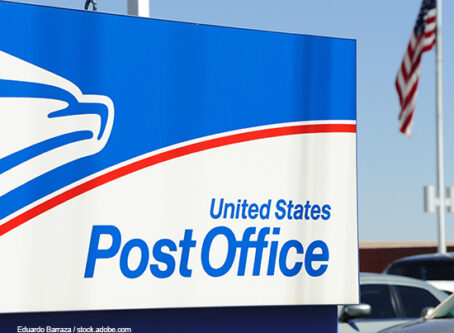Transport officials, stakeholders discuss problems and solutions of truck parking
During the latest National Coalition on Truck Parking meeting, transportation officials and stakeholders discussed the latest developments in the world of truck parking, including safety, funding and technology.
On Tuesday, Dec. 5, transportation officials and stakeholders gathered for two hours to discuss the current state of truck parking across the nation. A variety of topics were discussed, but one thing was clear: Truck parking continues to be a problem nationwide.
Transportation officials spent their time highlighting what they have been doing to combat the truck parking crisis. Several stakeholders, including the Owner-Operator Independent Drivers Association, the American Trucking Associations and the National Association of Truck Stop Operators, discussed how things are going on their end.
Funding
The coalition discussed the various funding mechanisms available for truck parking projects and some of the barriers governments and private industries face.
In opening remarks, Federal Highway Administration Administrator Shailen Bhatt said that the Infrastructure Investment and Jobs Act has expanded investments in truck parking, providing new resources to fund additional parking capacity.
There are several grant programs currently available for truck parking projects. The Columbia Port Commission in Louisiana was a recipient of one of those grants. Situated near state Highway 165 connecting Monroe (Interstate 20) and Alexandria (Interstate 49), the port received more than $15 million in Rebuilding American Infrastructure with Sustainability and Equity (RAISE) grants and $500,000 for a Department of Homeland Security Port Security Grant Program. The project includes a truck parking facility that adds spaces for 50 trucks.
A common issue with funding deals with a lack of education when it comes to the truck parking crisis and safety issues related to the lack of parking.
But not all states are out of the loop. Tyler Graham, a senior freight planning project manager at the Texas Department of Transportation, said the state’s Transportation Commission has been very receptive to the need for truck parking.
“So we’ve been very successful in recent years and carving out dedicated funding sources in our unified transportation program for a truck stop,” Graham said. “That’s something that is really going to make a huge difference in the coming years and decades in terms of the amount of publicly funded truck parking across the state.”
Funding is only useful if truck parking projects can get the green light. Alison Nealon, associate transportation planner at Caltrans, pointed out the NIMBY problem when proposing a parking project. Nealon also noted the extremely high costs of land needing to be acquired.
Tiffany Wlazlowski Neuman, vice president of public affairs for the National Association of Truck Stop Operators, said that local zoning laws are one of the biggest issues when it comes to creating new truck parking facilities. She noted a California member has been trying to rezone a piece of property for parking for over a decade.
Darrin Roth, American Trucking Associations’ vice president of highway policy, said that although federal grants are being issued for truck parking for the first time, only a handful of applications have been approved.
“In addition, nearly all federal aid highway money is available for parking expansion,” Roth said. “It’s tens of billions of dollars. Yet again, only a small number of parking projects have been funded from formula dollars. I’m really interested in knowing what’s preventing states from utilizing these resources.”
When it comes to more truck parking, the trucking industry needs to be patient. Nealon pointed out the time gap between studies and pouring more concrete.
“We completed the California statewide truck parking study in February of 2022, and I wish I could say that immediately after we just opened a bunch of new safety roadside rest areas,” Nealon said. “But that’s not the case. Fortunately, we do have a lot of irons in the fire.”
A lot of funding woes could be addressed with the Truck Parking Safety Improvement Act, the parking bill that allocates $755 million specifically for truck parking. Bryce Mongeon, director of legislative affairs for OOIDA, noted the importance of the bill.
“It’s interesting, because truck parking and this bill is not an issue where there’s any opposition on Capitol Hill, and that’s unique among trucking issues,” Mongeon said. “The biggest challenge is getting this issue to the top of lawmakers’ priority list and getting them to dedicate the time and political capital to move this forward.”
Safety
A lack of truck parking poses safety risks to the motoring public, a topic that was discussed throughout the meeting.
Federal Motor Carrier Safety Administration Administrator Robin Hutcheson noted that fatigue accounts for more crashes, serious injuries and deaths than almost anything else on the nation’s roadways. And a lack of safe truck parking contributes to driver fatigue.
Nealon highlighted the number of crashes involving parked trucks. Between 2014 and 2018 in California alone, there were more than 1,600 crashes involving a parked truck. That number does not include traffic incidents involving fatigued drivers. Nealon believes that there is not enough awareness of that aspect of truck parking.
Graham echoed that sentiment, adding that state DOTs have the unique opportunity to communicate the safety issues of truck parking with local governments, districts, private industry and the public.
Technology
Technology has been instrumental in pinpointing where truck parking is a problem. However, as one state transportation official noted, that technology is not always trustworthy.
Over at FMCSA, researchers have been working with crash data and relating it to truck parking to see the link between parking and safety. Nicole Katsikides, senior transportation specialist at FMCSA, mentioned that the administration is working on technology research for truck parking, mobile apps and other ways to use connected truck data to understand parking behavior and safety impacts of parking shortages.
In Texas, the state DOT has been using data to communicate parking needs to executive leadership and to the department’s districts. Meanwhile in Georgia, state DOT Program Manager Merishia Coleman said the department is in the early stages of implementing truck parking technology.
“We do recognize that that is a big piece of the truck parking environment,” Coleman said. “One of the things that we’ll be looking at as part of another plan or study is what kind of technology we can incorporate. Obviously, utilizing something that can be done or used across state lines is also a good aspect to consider. But just in general, we do have some state technology already in place, and so we want to be able to utilize some of that to really kind of get things started or at least to see what can be done.”
However, not all truck parking technology solutions have been successful.
During his presentation highlighting grant funding for parking information systems, Tom McDaniel, Kentucky Transportation Cabinet’s Division of Motor Carriers director, mentioned the shortcomings of the state’s system.
There are currently 12 sites using a truck parking availability information system in Kentucky. On average, these are over-reporting parking availability by 25%. For example, if 20 spots were available, the technology would report 25 available. One site was reporting nearly four times more than what was available, while another was reporting about a quarter of what was available. LL









